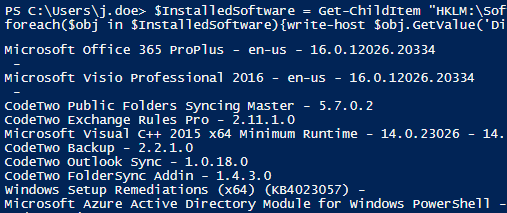
- #ACCESS RUNTIME 2010 INSTALL LOCATION REGISTRY FULL VERSION#
- #ACCESS RUNTIME 2010 INSTALL LOCATION REGISTRY 64 BIT#
- #ACCESS RUNTIME 2010 INSTALL LOCATION REGISTRY SOFTWARE#
If you want to know about the benefits of using Microsoft Access in your business, you can read about these here.įor a smoother download, the installation files for Access Runtime are inside.
#ACCESS RUNTIME 2010 INSTALL LOCATION REGISTRY 64 BIT#
A 32 bit version will work on a 64 bit computer but the 64 bit version will not work on a 32 bit computer.Īll the Access applications available for download on our website work in 32 bit versions of MS Access.
#ACCESS RUNTIME 2010 INSTALL LOCATION REGISTRY FULL VERSION#
It does not have any of the development and design tools of a full version of Access so you cannot make any changes to the design of an application and you can use the built-in menus or create your own queries or anything like that.įrom 2010 onwards Runtime comes in 2 versions: 64 bit and 32 bit. So, essentially it is designed for users to be able to use an application created by a developer with a full licence. Any other computer will instead execute the removal script and uninstall Office 2010 if it is still installed.Microsoft Access Runtime is a free version of Access that allows you to run Access applications including entering, deleting and modifying records. That way every computer who is a member of the "Office 2010" group will execute the deployment script on startup and deploy Office 2010 if necessary.

Leave the "Authenticated users" goup in this GPO with the standard rights. Add the "Office2010" group to the removal-GPO and give it the deny option of the "Apply GPO"-right.Remove the "authenticated users" group's "Apply GPO"-rights, but leave its "Read"-rights in.Add this group to the deployment-GPO and give it "Apply GPO"-rights.Create a security group, called somthing like "Office2010", that containes all computers that should get the product installed.You can even put the GPOs onto the same OUs if you play a bit with their security settings: The other one gets a slightly modified startup script that uninstalles Office if it is installed.


Just create 2 GPOs, one of them gets the computer startup script for Office 2010 deployment you can find in the article mentioned above. If you want to be able to remove the product later on (for example if you want to roll out a later Office version without changing to a later OS version) you have to expand it by a little step. Read this blog as everything you need for automated deployment ist explained there in great detail: The need for Office GPO-deployment has vanished with Office 2000 as all later versions can receive their updates through WSUS and therefor can be imaged with the operating system without the need for periodic redeployments with slipstreamed servicepacks and updates.įor all those who don't use imaging systems or don't want to integrate Office into their OS deployment there ist still a way to deploy and to remove MS Office through GPO it is just not the easy-clicky-way the modern Windows administrator has come to expect.
#ACCESS RUNTIME 2010 INSTALL LOCATION REGISTRY SOFTWARE#
You expect everyone that has a need for automatic GPO deployment to have a KMS running so they can deploy standard images with all basic software in them. Microsoft expects you to integrate Office into your Windows deployment image so they removed support for GPO-MSI deployment in order to integrate other features into the installer that are not supported in every MSI deployment situation. As the previously accepted answer is just wrong I will post the correct one here.


 0 kommentar(er)
0 kommentar(er)
